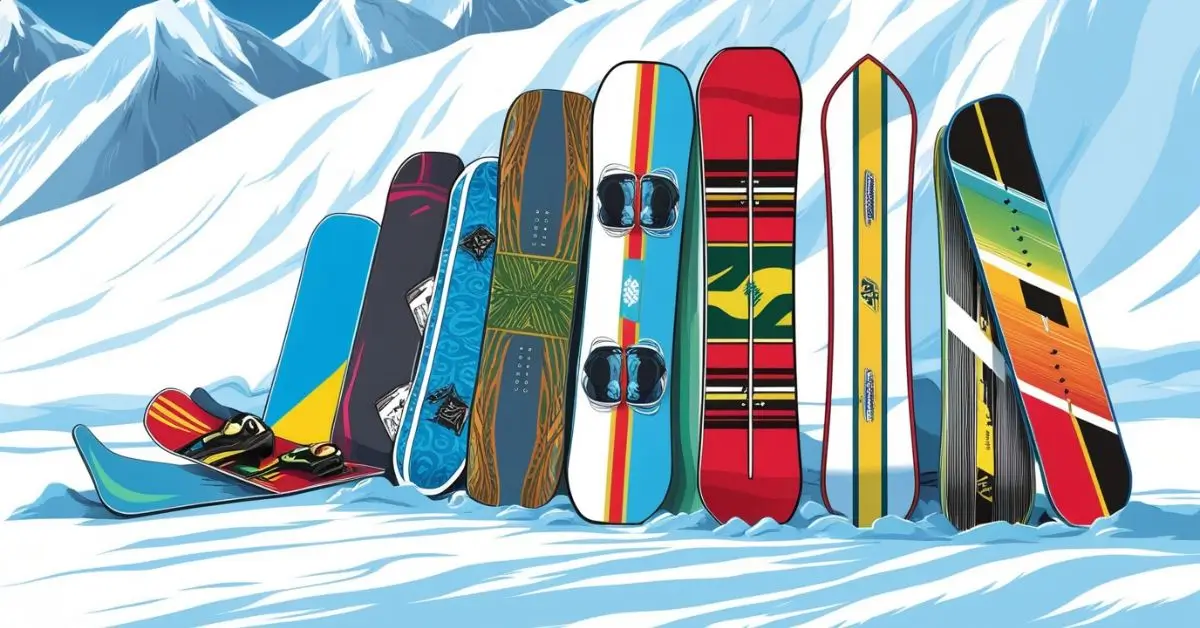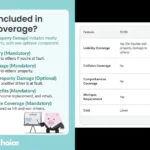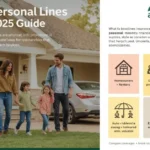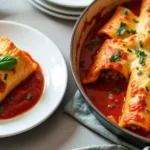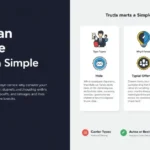Snowboarding is one of the most exhilarating winter sports, offering thrills for beginners and seasoned riders alike. However, to truly enjoy the sport and progress in skill, selecting the right snowboard is crucial. Not all snowboards are created equal, and each is designed to perform differently based on the terrain, riding style, and the rider’s level of experience. This comprehensive guide explores the different types of snowboards, their features, and which one might be right for you.
All-Mountain Snowboards
Best For: Versatility and a variety of terrains.
All-mountain snowboards are designed for riders who want to do a bit of everything. Whether you’re carving down groomed slopes, tackling off-piste powder, or cruising through a terrain park, an all-mountain board is a jack-of-all-trades. These boards have a medium flex, which allows them to perform well in various conditions.
Key Features:
- Directional Shape: Most all-mountain snowboards have a directional shape, meaning the nose is longer than the tail, making them ideal for forward riding.
- Medium Flex: The medium flex provides a balance between stability and flexibility, perfect for all types of snow conditions.
- Camber Profile: Many all-mountain boards feature a hybrid camber profile, which combines elements of both camber and rocker to provide stability and maneuverability.
Who Should Use Them: All-mountain boards are perfect for riders of all skill levels who want a versatile board that can perform well across different types of terrain. They are the most popular type of snowboard due to their adaptability.
Freestyle Snowboards
Best For: Park riders, tricks, and jumps.
Freestyle snowboards are specifically designed for riders who enjoy spending time in the terrain park, hitting jumps, rails, and boxes. These boards are shorter and lighter than other types, making them easier to control when performing aerial tricks and spins.
Key Features:
- Twin Shape: Most freestyle boards have a true twin shape, meaning both ends of the board are symmetrical. This allows riders to ride switch (backward) as easily as they ride forward.
- Soft to Medium Flex: Freestyle boards typically have a softer flex, which makes them more forgiving on landings and easier to manipulate for tricks.
- Flat or Rocker Profile: The board often has a flat or rocker profile, providing extra float and preventing the edges from catching during spins and tricks.
Who Should Use Them: Freestyle boards are ideal for park riders and those who love performing tricks, jumps, and spins. They are typically suited for more advanced riders who want to push the limits of their creativity on the slopes.
Freeride Snowboards
Best For: Off-piste, backcountry, and powder.
Freeride snowboards are built for riders who prefer the ungroomed, natural terrain. Whether you’re in the backcountry, riding through deep powder, or carving down steep mountain faces, freeride boards are designed for control and stability in challenging conditions.
Key Features:
- Directional Shape: Freeride boards usually have a directional shape, designed for one-directional riding. The tail is shorter and stiffer, providing stability in deep snow, while the nose is longer for better float.
- Stiff Flex: Freeride boards are generally stiffer than all-mountain or freestyle boards, offering more control and precision in rugged terrains.
- Camber or Hybrid Profile: Freeride boards often have a traditional camber or hybrid camber profile, which helps provide edge control and stability in variable snow conditions.
Who Should Use Them: Freeride snowboards are best for advanced riders who enjoy riding off-piste and exploring backcountry terrain. These boards require more skill to handle and are not as forgiving as softer, more flexible boards.
Powder Snowboards
Best For: Riding in deep powder snow.
Powder snowboards, as the name suggests, are designed for deep, soft powder snow. These boards are engineered to provide maximum floatation, allowing riders to glide effortlessly over deep powder without sinking.
Key Features:
- Directional Shape: Powder boards often have a tapered directional shape, with a wider nose and a narrower tail, to help keep the nose up and the board floating on top of the snow.
- Setback Stance: The bindings are typically set back toward the tail to improve floatation and control in deep snow.
- Rocker Profile: Most powder boards feature a rocker or hybrid rocker profile to keep the nose lifted and provide extra maneuverability in deep snow.
Who Should Use Them: Powder snowboards are best for experienced riders who frequent powder-heavy areas and want to maximize their performance in deep snow. While they excel in powder, they are not as versatile for groomed runs or park riding.
Splitboards
Best For: Backcountry touring and off-piste exploration.
Splitboards are a unique type of snowboard designed for backcountry touring. They can be split into two halves, which function as skis for uphill climbing, and then rejoined to form a traditional snowboard for the descent. This design allows riders to access remote areas without needing lifts or helicopters.
Key Features:
- Split Design: The board splits into two halves, each of which can be used as a ski for hiking uphill.
- Climbing Skins: Splitboards often come with or are compatible with climbing skins, which provide traction for hiking up snowy slopes.
- Directional Shape: Splitboards are typically directional, as they are primarily designed for downhill riding once the rider reaches the peak.
Who Should Use Them: Splitboards are ideal for advanced riders who want to explore the backcountry and access remote terrain. They require additional equipment like skins and specific bindings and boots, making them more suitable for experienced snowboarders who enjoy backcountry touring.
Carving Snowboards (Alpine Snowboards)
Best For: High-speed carving on groomed runs.
Carving or alpine snowboards are designed for riders who love to carve down groomed slopes at high speeds. These boards are typically longer, narrower, and stiffer than other types, allowing for precise edge control and stability at high speeds.
Key Features:
- Directional Shape: Alpine boards have a directional shape, optimized for downhill carving.
- Narrow Waist: The narrow waist of carving boards makes edge-to-edge transitions quicker and more efficient.
- Stiff Flex: These boards have a stiff flex, which provides stability and precision, particularly at high speeds.
Who Should Use Them: Carving snowboards are best for advanced riders who enjoy aggressive carving on groomed slopes. These boards are not designed for park riding or deep powder, but they excel in high-speed, controlled descents on groomed runs.
Youth/Kids Snowboards
Best For: Young riders and beginners.
Youth and kids’ snowboards are designed specifically for younger riders. These boards are typically shorter, softer, and lighter than adult boards, making them easier to control and maneuver for beginners. Many youth boards come with softer flex patterns and forgiving profiles to help young riders learn the basics of snowboarding.
Key Features:
- Short Length: Youth boards are sized for smaller riders, making them easier to control.
- Soft Flex: The softer flex helps younger riders initiate turns and control their movements more easily.
- Twin or Directional Shape: Youth boards come in both twin and directional shapes, allowing kids to choose based on their preferences and riding style.
Who Should Use Them: Youth snowboards are perfect for children and beginners. They are designed to make the learning process easier and more enjoyable for young riders.
Women’s Snowboards
Best For: Female riders of all skill levels.
Women’s snowboards are designed to accommodate the specific body mechanics of female riders. These boards are typically lighter, narrower, and softer than men’s snowboards, making them easier for women to control and maneuver.
Key Features:
- Narrow Waist: Women’s boards have a narrower waist width to accommodate smaller feet, providing better edge control.
- Softer Flex: The softer flex helps female riders initiate turns more easily and provides more control.
- Specific Stance Options: Women’s snowboards often have stance options that cater to a lower center of gravity, making the ride more comfortable and balanced.
Who Should Use Them: Women’s snowboards are designed for female riders of all skill levels, from beginners to advanced. They provide a better fit and performance for women, making the snowboarding experience more enjoyable and efficient.
Conclusion
Selecting the right snowboard is essential to having a great time on the slopes. Each type of snowboard is designed to cater to different riding styles, terrains, and levels of experience. Whether you’re looking for a versatile all-mountain board, a powder-specific board for deep snow, or a freestyle board for park tricks, there’s a snowboard out there tailored to your needs.
When choosing your snowboard, consider your riding style, the terrain you’ll be riding on most frequently, and your skill level. If you’re a beginner, an all-mountain board is a great starting point due to its versatility. More advanced riders might prefer specialized boards like freeride or powder boards to take their riding to the next level.
In the end, the most important thing is to find a board that matches your personal preferences and makes snowboarding enjoyable for you.

